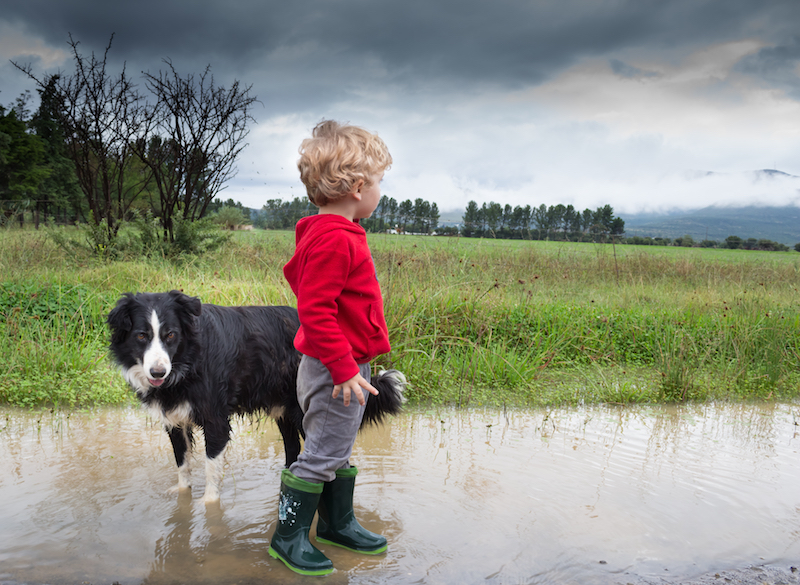Animals, including dogs don’t have an innate understanding of what natural events, such as thunderstorms, are; so, they become scared when they are faced with loud unfamiliar sounds. The loud, unfamiliar, sound is perceived as a threatening element. When feeling threatened, your dog will try to hide in a place where she feels secure; this could be under a table, behind a curtain, or even a bathtub.
Fear of loud unfamiliar sounds can also result in destructive behavior (as a means of relieving anxiety), , and/or running away.
What Can Be Done About Fear of Loud Sounds?
It is important to note that fear of a particular noise may become associated with other things or activities, and your dog may become afraid of those things as well. For example, if your dog develops a fear of thunder, she may also become afraid of dark thunderclouds, and windy conditions which usually precede thunder and lightning.
Provide Your Dog with a Safe Space: Dogs feel comfortable and safe in small, and snug spaces, and having such a place to hide when they hear a frightening sound can help calm them down. It is important to create such a place based on your dog’s desires, and not a place that you feel she would find comforting. Pay attention to where she tries to hide when she hears thunder or other similar sounds, and provide her access to that location, or if that is not always possible, create a place for her that is very much like her preferred hiding place.
Distract Your Dog with Activities: This approach works only when your dog is not in full panic mode yet, so you have to catch her before she is already at the point where she is on her way to her hiding spot. If you can catch her at the right time, by introducing an exciting activity such as playing fetch or practicing one of her favorite tricks. Do keep in mind that it will take several attempts to get her completely used to the loud sound, and you will need to back off and let her whatever it is that she needs to do to alleviate her anxiety once fear has actually taken hold.
Behavior Modification & Desensitization: If you would like to be proactive, you can try your hand and behavior modification and desensitization. For example, you can prepare a recording of thunder sounds and play the audio in the background, at low volume, when your dog is doing something mundane, like chewing on a toy or eating her food. Continue this activity by gradually increasing the volume during each session, until such time when the volume is loud enough to match that of what your dog might naturally experience. It is important to stop right away if your dog displays any sign of fear, and try again the following day.
Things Not to Do
- Do not try to calm your dog when she is afraid. This approach may inadvertently reinforce the behavior by rewarding her fearfulness. Instead, just ignore her fearful reactions and go about your business.
- Do not restrict her movement by placing her in a crate or tying her up, as she might injure herself by trying to get away from the loud noise, as restricting her movement will not relieve her fear and anxiety.
- Do not force your dog to move closer to the noise that is making her fearful. The way to get her used to the sound is through desensitization (as described above), not by forcing her to fully experience the fearful situation as she is trying to run away from the source of her fear and anxiety.
- Never punish your dog for being afraid of a sound (or anything for that matter).
You may end up having to consult with an animal behavior specialist in order to get your dog not be afraid of loud noises.

